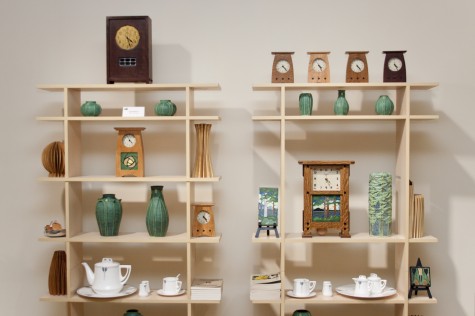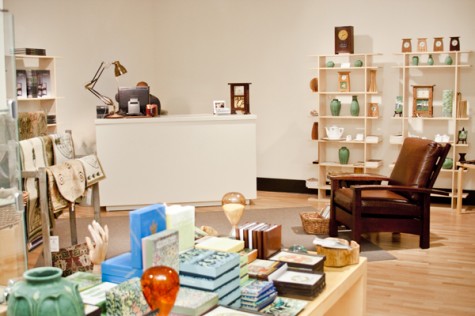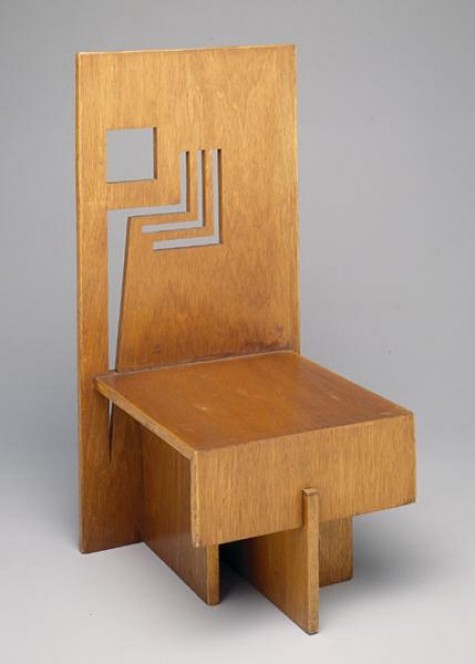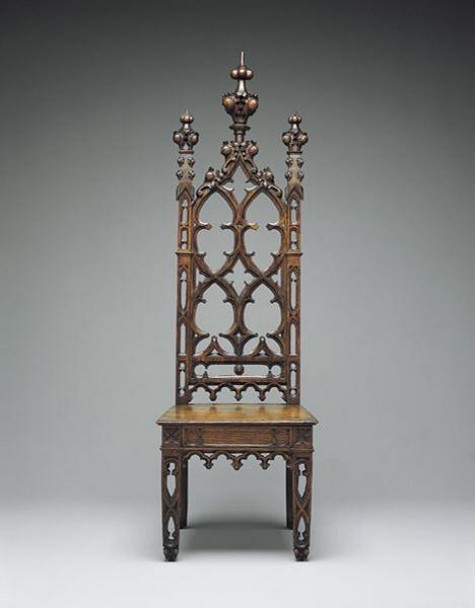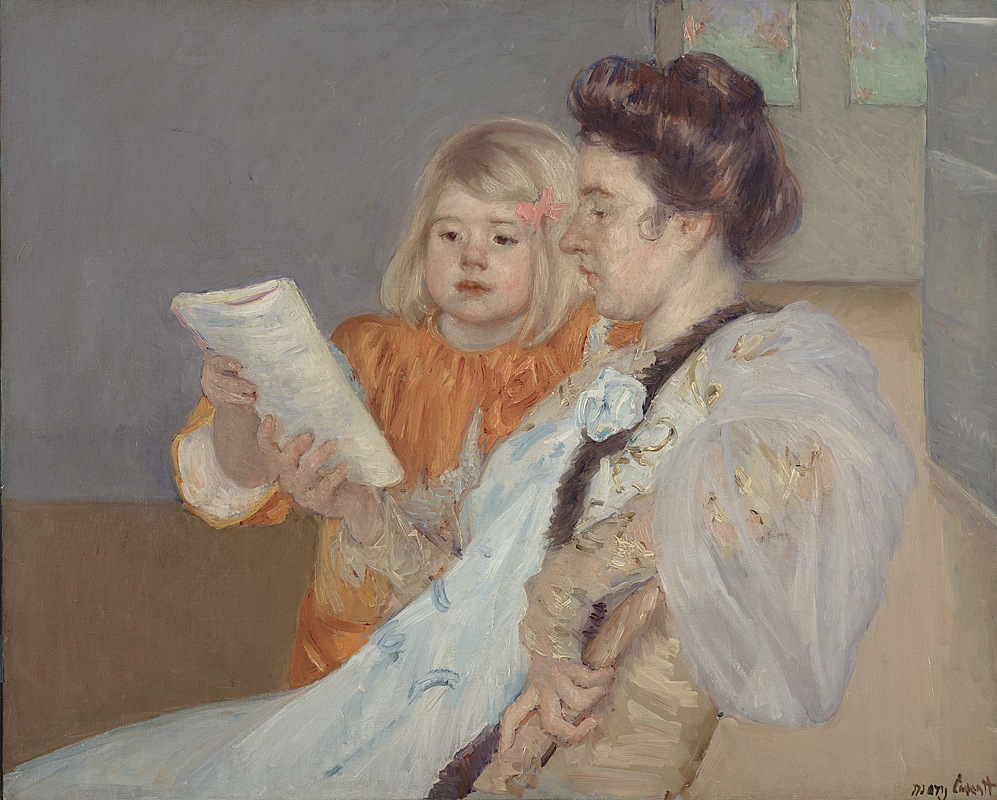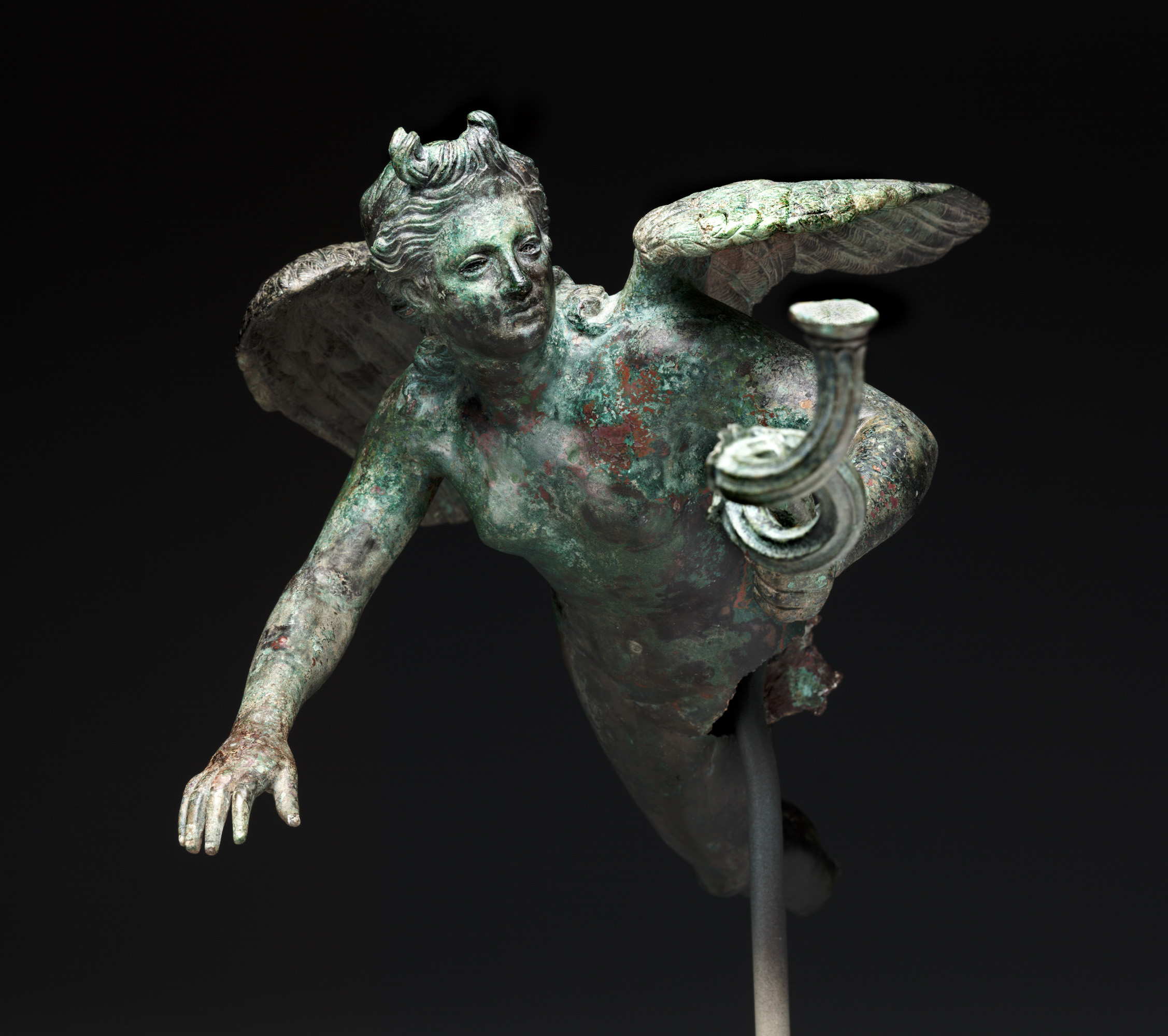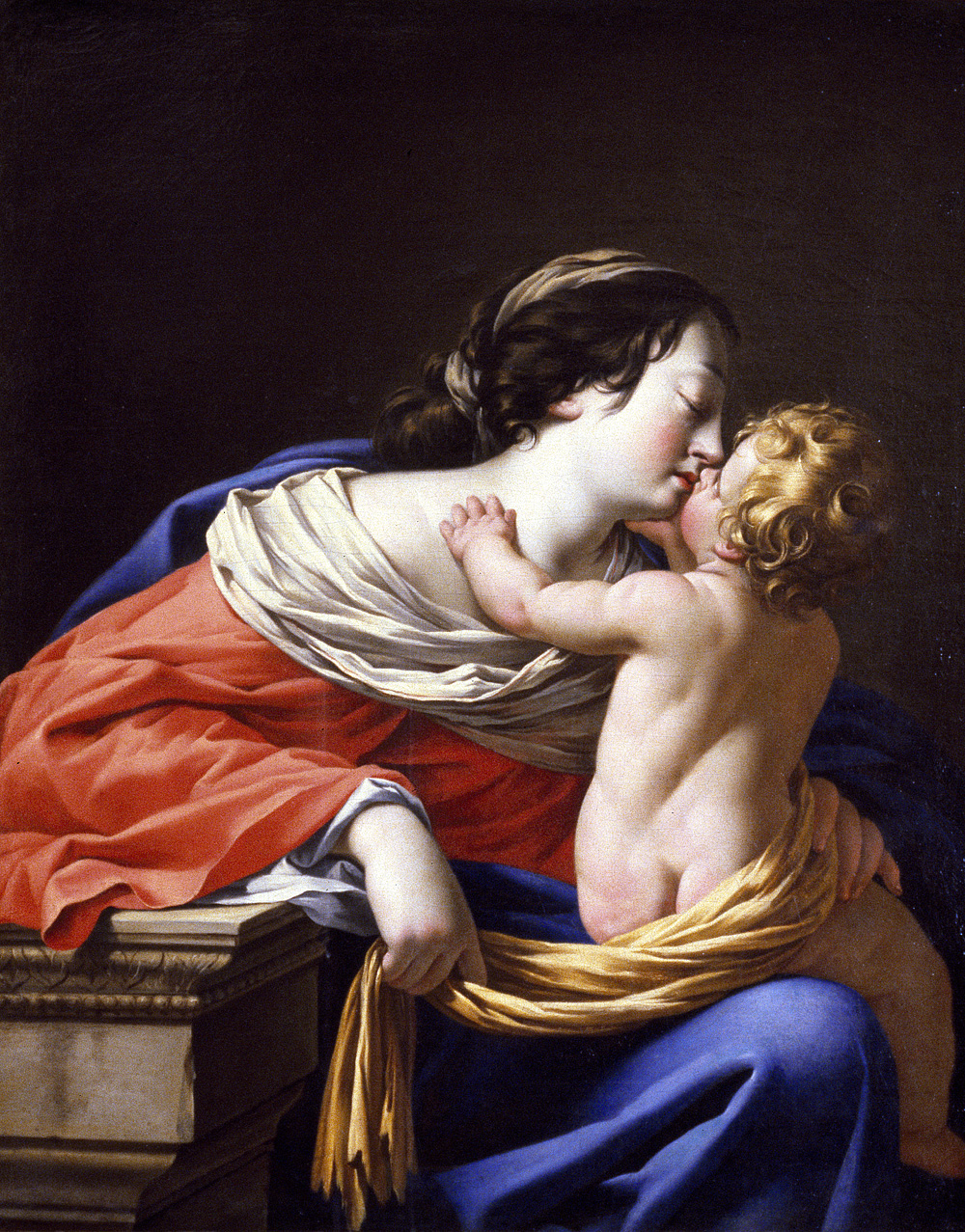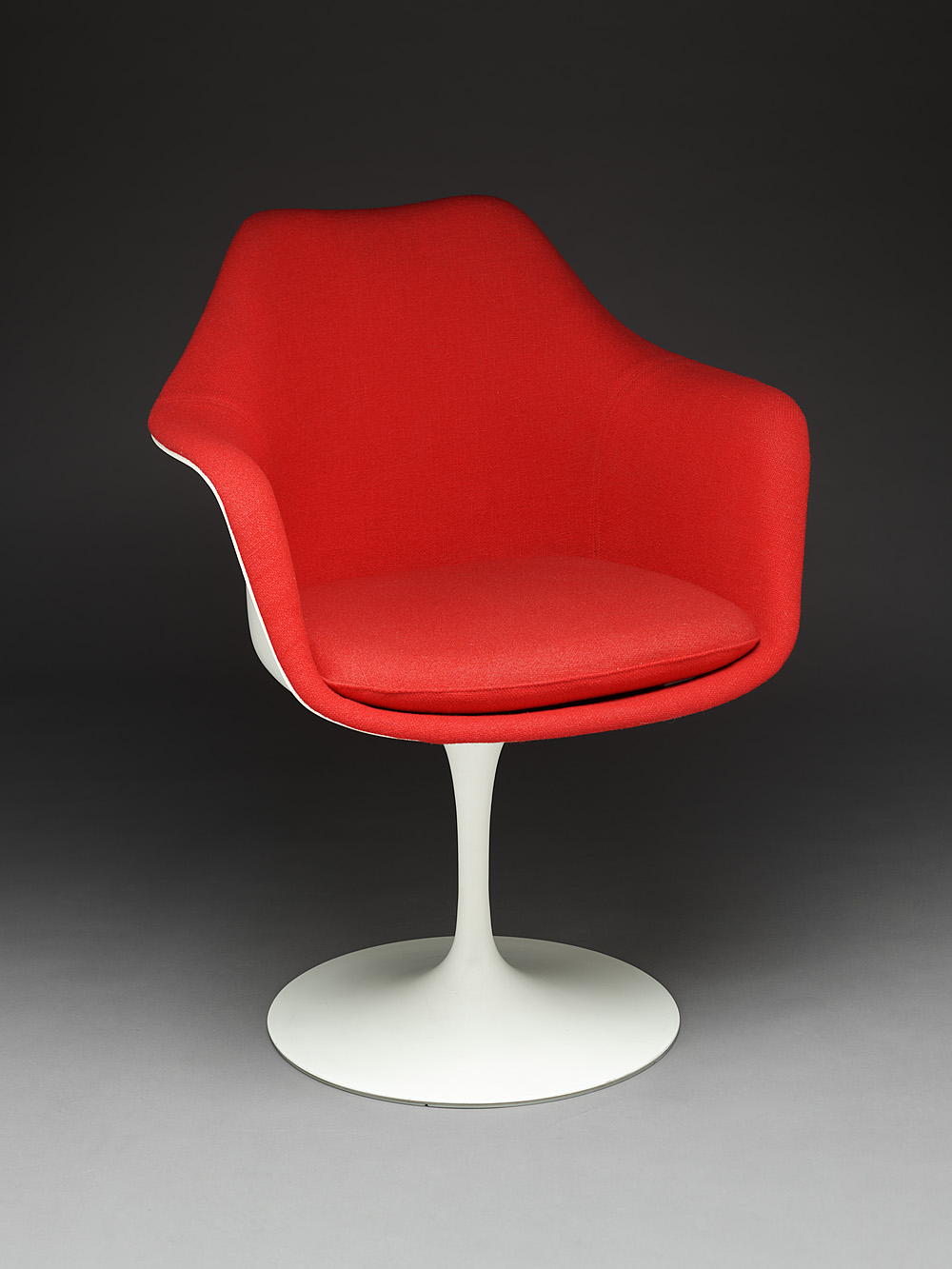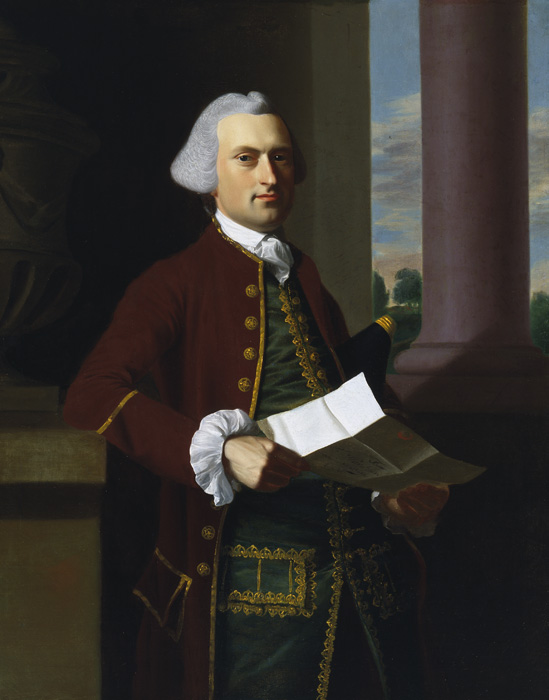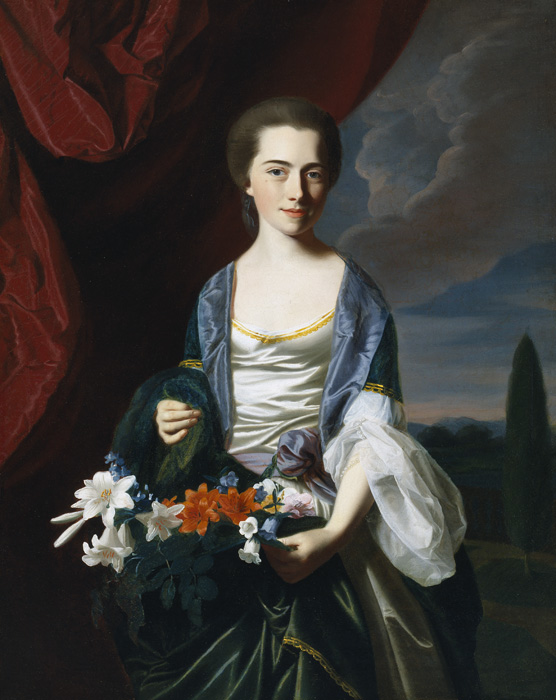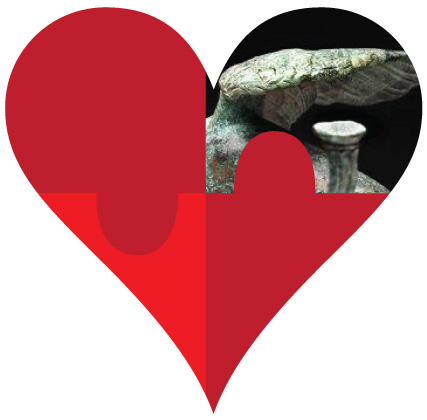Take home a bit of Americana inspired by the age of Gustav Stickley in the exhibition store.
Archive for February, 2011
Exit Through the (Stickley) Gift Shop
Published February 16, 2011 Exhibitions 1 CommentTags: Americana, Dallas Museum of Art, Gustav Stickley, Gustav Stickley and the American Arts & Crafts Movement, Museum store, shopping
Artist Spotlight: Emile Bernard
Published February 15, 2011 Art & Teaching , works of art ClosedTags: bernard, Brittany, docents, education, Emile Bernard, exoticism, Gauguin, Pont-Aven, Synthesist, teaching, training
I recently had the pleasure of speaking with our docents about two paintings within the collection by 19th-century, French artist Emile Bernard (1868-1941). Both of these works feature Breton women (from the region of Brittany in France) in traditional festival attire. In the late-19th century, the villages of Brittany, like many other rural sites outside Paris, had become the center of various artist colonies. The most well-documented of these sites is the city of Pont-Aven, which between 1886 and 1894 became the stomping ground of notable artists such as Paul Gauguin, Paul Serusier, and Emile Bernard. This cast of characters, along with an international array of artists from countries such as Holland, Belgium, Switzerland, became known as the Pont-Aven School and triumphed a pared-down aesthetic that departed from the naturalism of Impressionism and emphasized a synthesis of the impressions of nature and abstract forms that underlined emotional experience.
[slideshow]
Brittany was fertile ground for the Pont-Aven School artists because of its association with an exotic aesthetic that played up the primitivism of the picturesque peasants and overlooked the industrial developments and spread of Parisian taste and sophistication to the not-so-remote villages. In this sense, what the artists left out–factories, commericalism, and modern advancements–become just as much the subject of the work as what they included.
Bernard first visited Brittany in 1886 and would return to the region the next four summers. In 1888, he worked closely with Paul Gauguin, and together they launched the Synthesist style that characterized much of the work coming out of Pont-Aven. Bernard was inspired by Medieval cloisonne, or the technique of applying enamel partitions within stained glass. He and Gauguin, like many artists of the period, also looked to Japanese prints for inspiration and a means to rejuvenate the European style.
The two DMA paintings by Bernard are dated 1891 and 1892 by the artist in the lower right-hand corner of the canvases next to his signature. In 1893, he left for a ten-year soujourn in Egypt and would not return to Brittany until 1910 for a brief stay and 1939-1940 for an extended stay the year before his death.
“Othering” is the act of creating an uneven power hierarchy through the myth of a binary of “us” and “them.” This serves tp emphasize the percieved weaknesses of “them,” or the marginalized society, as a means of underlining the superiority and right to power of “us.”
These works of art can be used with students at the Museum or in the classroom. They are a great jumping off point to think about exoticism and its role in art. Exoticism is typically associated with well-known works by Orientalist painters such as Jean-Auguste Dominique Ingres and primitivists like Paul Gauguin. The Pont-Aven School works embody similar ideas of “othering,” except that the exotic projections take place within France and become a sort of internal othering. What other examples of othering, based on gender, race, ethnicity, religion, etc. can you think of in art and popular visual culture?
Ashley Bruckbauer
McDermott Intern for Teacher Programs and Resources
Seldom Scene: Love Designed
Published February 14, 2011 Center for Creative Connections , Collections , Curatorial , Decorative Art and Design 1 CommentTags: Center for Creative Connections, Dallas Museum of Art, DMA, Fine and Decorative Arts, Frank Lloyd Wright, Love
[youtube=http://www.youtube.com/watch?v=uIvIjRXPcTU&w=480&h=390]
The Center for Creative Connections invites you this spring to explore the Encountering Space exhibition with a fresh perspective inspired by designed spaces. Experience changes on view March 12 – September 30, 2011 throughout the Center including two additional works from our Decorative Arts collection shown below. Get involved and share your own photographs of designed spaces on Flickr, www.flickr.com/groups/dmadesigned.
Reader Pick: Love in the DMA's Collection
Published February 14, 2011 works of art 4 CommentsTags: Love
February is a month known for love. To celebrate love in the DMA’s collections, I would like you, the reader, to choose a work of art that best exemplifies love from the below objects. After selecting a work of art, leave a comment as to how you think it relates to love. Next Tuesday, I will let you know which work of art received the most votes. Let the voting begin!
- Mary Cassatt, The Reading Lesson, c. 1901, Lent by the Pauline Gill Foundation
- Eros Lamp Holder, early first century B.C., The Eugene and Margaret McDermott Art Fund, Inc.
- Simon Vouet, Madonna and Child, c. 1635-1640, Dallas Museum of Art, Gift of Colonel C. Michael Paul
- Eero Saarinen, “Tulip” Armchair, Designed 1956, Manufactured c. 1973, c. 1980, Gift of Knoll International
- John Singleton Copley, Woodbury Langdon, 1767, The Eugene and Margaret McDermott Art Fund, Inc.
- John Singleton Copley, Sarah Sherburne Langdon, 1767, The Eugene and Margaret McDermott Art Fund, Inc.
Amy Wolf
Coordinator of Gallery Teaching
Friday Photos: Mystery Artwork
Published February 11, 2011 Art & Teaching , Friday Photos , works of art 1 CommentDallas Museum of Art educators want to introduce a new way of helping you look at and learn about the works of art in our collection. Throughout February, we will present a mystery artwork and give you five clues to help you search our online collection for the answer. You will get one week to search before we reveal the big mystery. So buddy-up with a partner or go searching on your own and get ready to explore our collection. We also invite you to visit the Museum and search in the galleries. Admission is free during our African Masks Family Celebration, or you may want to search during our romance-inspired Late Night.
In honor of Valentine’s Day I want to show you some love. Here are some clues to help you find the artwork I’m thinking of……
- I’m made of bronze for strength and durability. Some might say, it’s a sign of our enduring love.
- I’m part of an ancient story of love and attraction.
- I’m the son of the goddess of love.
- I’m used to shine light in dark places.
- I was recovered from an ancient shipwreck near the town of Mahdia on the coast of Tunisia.
What Am I?
Here are a few tips to get you started:
- Click on Collections to begin your search.
- Post the name of the artwork in our comments section.
Best Wishes,
Karen A. Colbert
Teaching Programs Intern
Thematic Connections with Contemporary Art: Systems and Process
Published February 10, 2011 Art & Teaching , works of art ClosedTags: Art, Contemporary Art, resources, teacher workshop
We constantly encounter and use systems in our everyday lives – roadways, electricity, mathematics, language, and so much more. Although there are multiple definitions of a system, the one that seems to be the most universal is a grouping of interacting, interrelated, or interdependent items forming a unified whole.
An artist may employ a system in his or her creative process, in subject matter, or in concept. During the first part of the Contemporary Teacher Workshop (at the Dallas Museum of Art) on Saturday, February 19, participants will explore the theme of systems in select artworks from the 1960s through today in the exhibitions Re-Seeing the Contemporary: Selected from the Collection and Big New Field: Artists in the Cowboys Stadium Art Program. With a focus on language and systems within an artist’s process, educators will engage in interactive and interdisciplinary experiences that are applicable and translatable for the classroom. On Saturday, February 26, our conversation about the artist’s process will continue at The Rachofsky House as we view the current installation Process Imperfect.
There are a few spaces available for this two-part teacher workshop. If interested, please register online.
Here are a few artworks that may be a part of the conversation on Saturday, February 19:
[slideshow]
We look forward to seeing you at the workshop!
Until next time….
Jenny Marvel
Manager of Programs and Resources for Teachers
Images in slide show:
Richard Diebenkorn, Ocean Park No. 29, 1970, Dallas Museum of Art, gift of the Meadows Foundation, Inc.
Christopher Wool, Untitled, 1990, Dallas Museum of Art, gift of the Friends of Contemporary Art
Sol Lewitt, Wall Drawing #398, 1983 (drawn 1985), Dallas Museum of Art, gift of The 500, Inc., Mr. and Mrs. Michael J. Collins and Mr. and Mrs. James L. Stephenson, Jr.
Carl Andre, Pyramid (Square Plan), 1959 (destroyed) 1970 (remade), Dallas Museum of Art, General Acquisitions Fund and matching funds from The 500, Inc.
Setting the Exhibition Stage: Gustav Stickley
Published February 9, 2011 Behind-the-Scenes , Curatorial , Decorative Art and Design , Exhibitions 3 CommentsTags: behind the scenes, Dallas Museum of Art, Gustav Stickley, Gustav Stickley and the American Arts & Crafts Movement
Have you ever wished you could see what goes on behind closed doors at the Museum before an exhibition opens? Well, we want to bring you in on the action with a few scenes from the installation of the DMA-organized exhibition Gustav Stickley and the American Arts & Crafts Movement, which opens this Sunday. If you can’t wait until the February 13 to see more, you are in luck! A FREE sneak peek of the exhibition begins at noon on Saturday.
[slideshow]
Dining Among Masterpieces
Published February 8, 2011 African Art , Behind-the-Scenes , Exhibitions , Late Nights , Thursday Night Live 1 CommentTags: activities in Dallas Texas, African Mask exhibition, Atrium at the DMA, attractions around Dallas, best things to do in Dallas, Dallas Museum of Art, Dallas Texas tourist attractions, DMA, Executive Chef at the Atrium Cafe, J.M.W. Turner Exhibition, Late Nights at the Museum, Michelin chefs, new exhibitions, Northern African cuisine, priceless pieces of art, Thursday Night Live
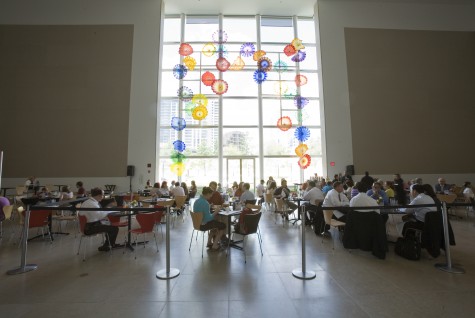 Art and good food? We have both at the Dallas Museum of Art. The Cafe at the DMA offers a simple, yet elegant menu with a unique setting. We are sharing the secret with you about what makes the food and experience in the Cafe so special, and who better to tell us than the head chef himself?
Art and good food? We have both at the Dallas Museum of Art. The Cafe at the DMA offers a simple, yet elegant menu with a unique setting. We are sharing the secret with you about what makes the food and experience in the Cafe so special, and who better to tell us than the head chef himself?
Chef Brian has been our Executive Chef at the Cafe since late September. He discovered his love for cooking at the age of 5, and since then has been working in great kitchens throughout North Texas. Now, he creates food to complement the various exhibitions at the Museum. Here’s our “behind-the-scenes” interview with him:
Uncrated: What are some of the dishes you’ve created inspired by art at the DMA?
Chef Brian: “This is one of my favorite parts of my job – when we have new exhibitions. I not only get to learn about the works of art being featured in the exhibition, but I get to research the cuisine from the region that they come from.
The Mourners exhibition by far has been the most thrilling for me as a Chef. We were charged with putting on a dinner inspired by Michelin-starred chefs from Dijon, France. With the African Masks exhibition, I got to really dive into some South African, Gambian, and Northern African cuisine, to create some of my newest favorite things– – South African Honey Cake with Abuelita Pudding and White Chocolate Anglaise. I make this treat at home for myself!”
Uncrated: What was your favorite exhibition?
Chef Brian: “J.M.W. Turner . The masterpieces that were shown brought such wonderment to my eyes. That’s the one thing I love about art: No matter how old or new the work may be, you never know how it can affect you in a positive way and lift your spirits when they need lifting.”
Uncrated: How does your team prepare for Late Nights at the DMA?
Chef Brian: “I think that Late Nights at the Museum is one of the best attractions in Dallas. We take a look at what programs and activities are going to happen that night at the museum, and try to plan accordingly with the theme and feel that the DMA is going for. We keep it simple, so that food can be enjoyed by everyone, from the little artist to the art lovers.”
Uncrated: What’s the best thing about having lunch at the Cafe at the DMA?
Chef Brian: “When I go to a restaurant, I’m looking for an experience. Well, what better place to sit down and have a bite to eat than the DMA? Besides being surrounded by priceless works of art, the menu is very bistro and friendly to almost every type of eater. For me, to eat great classic food with fresh products surrounded by incredibleart is a win-win for all.”
Check out the Cafe menu online.
My Day With Haute Couture: Visiting Paris with Jean Paul Gaultier
Published February 7, 2011 Behind-the-Scenes , Curatorial , Exhibitions , Fashion 1 CommentTags: Dallas Museum of Art, Haute Couture, Jean Paul Gaultier, Montreal Museum of Fine Arts, Paris France, The Fashion World of Jean Paul Gaultier: From the Sidewalk to the Catwalk
Every address in Paris resounds with some note of the city’s history as an artistic and cultural capital of Europe, but this week one address in particular, on rue Saint-Martin, echoed with cancan music and vibrant images of haute couture crafted by one of the enduring figures of the fashion world, Jean Paul Gaultier.
Two weeks ago I had the good fortune to visit the city and experience the premiere of Gaultier’s new spring and summer couture line, a selection of forty-six works evocative of not only the world of that most recognizable of dances but with punk culture of the 1970s. As he is known to do so well, Gaultier fused disparate influences into a richly charged whole—with dresses winkingly titled “The Clash,” “Too Fast to Live Too Young to Die,” and “Toulouse Lautrec.” While sophisticated in the materials, articulated forms, and elegant profiles, the line was anything but aloof, sedate, or boring—and proved that, in his fourth decade as an independent designer, the enfant terrible of the fashion world could still thrill and titillate while exhibiting the mastery gained in his years of work. To me, Gaultier’s best work is when his inspirations, from street fashion to various world cultures, just begin to fuse in his designs yet remain disparate enough to create a frisson that truly electrifies the viewer. Indeed, as fashion is articulated design for the human body, motion is implied; to excite, good design should have a restless and somewhat unexpected side.
[youtube=http://www.youtube.com/watch?v=8cqenagZO1s&w=480&h=390]
My visit was in anticipation of the DMA’s forthcoming presentation of The Fashion World of Jean Paul Gaultier: From the Sidewalk to the Catwalk, opening on November 13, 2011, following its international premiere at the Montreal Museum of Fine Arts in June. The first dedicated fashion exhibition hosted by the DMA under the aegis of the Museum’s Decorative Arts and Design program, this multisensory exploration of the career of Gaultier will include about 120 examples of his designs dating from the 1970s to works created in just the last year. Given the excellence of his work as one of the foremost fashion designers of recent decades, we are exceptionally thrilled to be the first venue in the United States for this landmark exhibition.
After the show, I enjoyed the exceptionally rare opportunity to not merely review the works in his salon but visit the atelier on the top floor. Here, within this hive of alternately small and large workrooms, great bolts of fabric and endless tubs of beads, feathers, and trimwork rested neatly upon shelves, seemingly with no space unused. On any walls that had somehow managed to escape a shelving unit, photographs, Gaultier’s sketches, and notes were tacked. Staff diligently and carefully stitched, examined, and checked pieces, while fragments of prototypes—sections of dress with sample materials, alternate patterns, and differing techniques—hung from racks. While each of these vignettes might seem otherwise unremarkable to anyone familiar with the art of costume, the entire workshop reverberated with the energy of rapid preparations that had paused for but a moment as the forty-six works were presented to the eager crowd on the third floor of the building the prior afternoon. Before that day was done, the work began anew, plotting a course toward the next line of works that Gaultier had envisioned.
This November, Texans won’t have to go to France to experience the visual sophistication and boundless energy within Gaultier’s creations—they will just have to visit the DMA.
Kevin W. Tucker is The Margot B. Perot Curator of Decorative Arts and Design at the Dallas Museum of Art.
